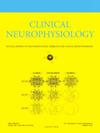估算传感器空间脑电图连通性 第 2 部分:为真实数据中的功能连通性确定最佳伪影减少技术
IF 3.7
3区 医学
Q1 CLINICAL NEUROLOGY
引用次数: 0
摘要
目的脑电图(EEG)可用于评估大脑功能连接(FC)。然而,不同研究中的 FC 测量方法存在很大差异,这可能会导致研究结果的异质性。我们的目的是评估不同的脑电图预处理步骤在应用于真实脑电图数据时如何影响脑电图-功能连接测量。方法利用 BrainClinics.com 开源脑电图数据存储库,我们研究了不同的预处理步骤如何影响检测阿尔法波段功能连接的年龄相关差异的能力以及功能连接测量的测试-重复可靠性。测试的预处理步骤包括减少伪影技术(独立成分分析 (ICA)、小波增强 ICA (wICA) 和多通道维纳滤波器 (MWF))、不同的历时长度(历时长度分别为 2 秒和 6 秒)以及不同的重新参考蒙太奇(共同平均参考 (CAR) 和电流源密度 (CSD) 重新参考)。我们还评估了不同的 FC 指标,包括假想相干性 (iCOH)、实际幅度平方相干性 (rMSC) 和加权相位滞后指数 (wPLI) 指标。结果在检测阿尔法 FC 中与年龄相关的差异并提供高重复测试可靠性方面表现最好的管道包括通过 ICA 或 wICA 减少伪影、使用 CSD 方法重新参考数据以及通过 rMSC 测量 FC。本文证明了一种脑电图预处理管道能够很好地检测出有意义的效应,并为传感器空间脑电图α频率FC提供较高的测试-再测可靠性。本文章由计算机程序翻译,如有差异,请以英文原文为准。
Estimating sensor-space EEG connectivity PART 2: Identifying optimal artifact reduction techniques for functional connectivity in real data
Objectives
Electroencephalography (EEG) can be used to assess functional brain connectivity (FC). However, there is considerable variability in the methods used for FC measurement across different studies, which may contribute to heterogeneity in research outcomes. We aimed to assess how different EEG pre-processing steps impact EEG-FC measurement when applied to real EEG data.
Methods
Using the BrainClinics.com open-source EEG data repository we investigated how different pre-processing steps impacted the ability to detect age-related differences in alpha band FC and the test–retest reliability of FC measures. The pre-processing steps tested included artifact reduction techniques (Independent Component Analysis (ICA), wavelet-enhanced ICA (wICA), and Multi-channel Wiener Filters (MWF)), different epoch lengths (epochs that were 2 s versus 6 s in length), and different re-referencing montages (the common average reference (CAR) versus current source density (CSD) re-referencing). We also assessed different FC metrics including imaginary coherence (iCOH), real magnitude squared coherence (rMSC), and weighted phase lag index (wPLI) metrics.
Results
The best performing pipeline at detecting age-related differences in alpha FC and providing high test–retest reliability included artifact reduction by ICA or wICA, data re-referenced using the CSD method, and FC measured by rMSC.
Conclusion & significance
This paper presents evidence for an EEG pre-processing pipeline that provides good detection of meaningful effects and high test–retest reliability for sensor space EEG alpha frequency FC.
求助全文
通过发布文献求助,成功后即可免费获取论文全文。
去求助
来源期刊

Clinical Neurophysiology
医学-临床神经学
CiteScore
8.70
自引率
6.40%
发文量
932
审稿时长
59 days
期刊介绍:
As of January 1999, The journal Electroencephalography and Clinical Neurophysiology, and its two sections Electromyography and Motor Control and Evoked Potentials have amalgamated to become this journal - Clinical Neurophysiology.
Clinical Neurophysiology is the official journal of the International Federation of Clinical Neurophysiology, the Brazilian Society of Clinical Neurophysiology, the Czech Society of Clinical Neurophysiology, the Italian Clinical Neurophysiology Society and the International Society of Intraoperative Neurophysiology.The journal is dedicated to fostering research and disseminating information on all aspects of both normal and abnormal functioning of the nervous system. The key aim of the publication is to disseminate scholarly reports on the pathophysiology underlying diseases of the central and peripheral nervous system of human patients. Clinical trials that use neurophysiological measures to document change are encouraged, as are manuscripts reporting data on integrated neuroimaging of central nervous function including, but not limited to, functional MRI, MEG, EEG, PET and other neuroimaging modalities.
 求助内容:
求助内容: 应助结果提醒方式:
应助结果提醒方式:


